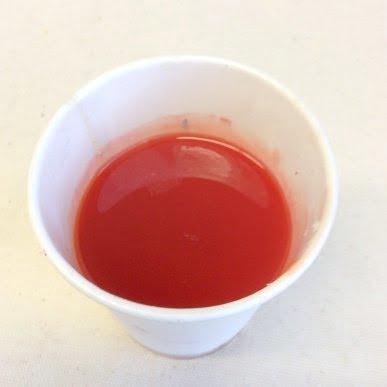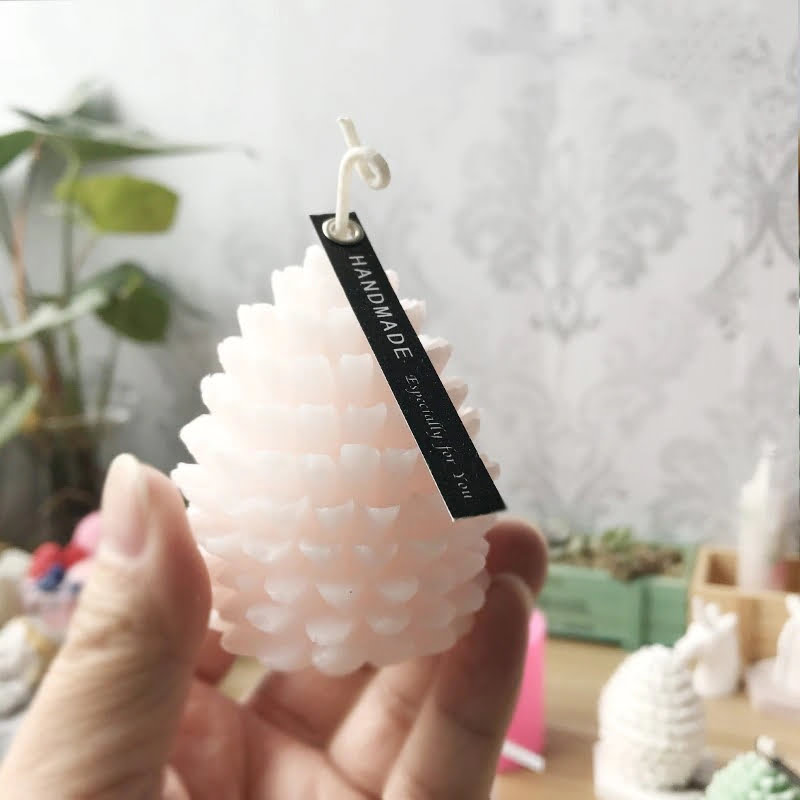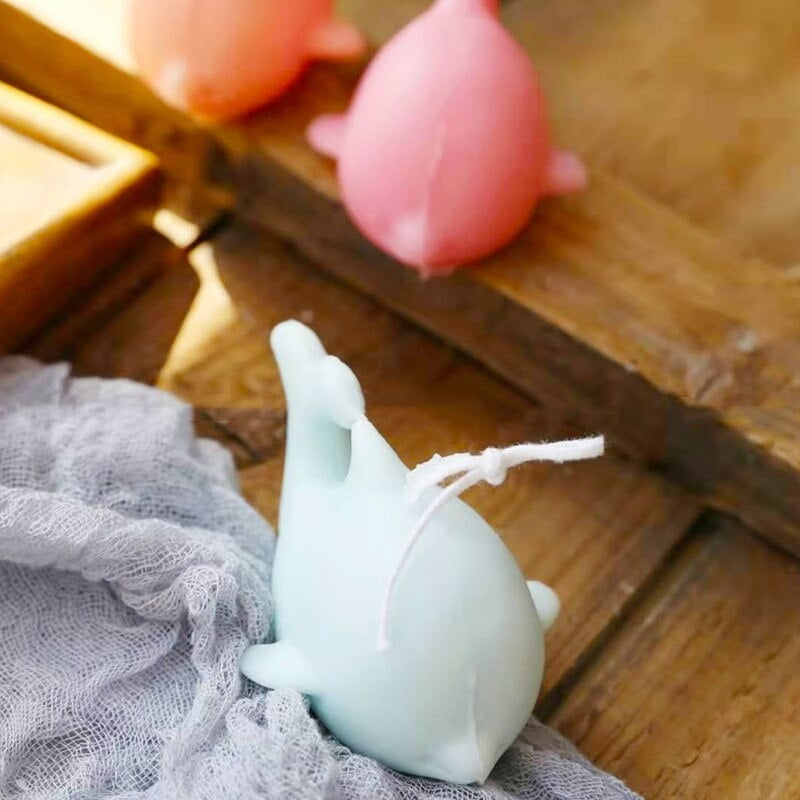Candle making is a beloved craft that allows individuals to create beautiful and personalized ambiance in their homes. While the wax, wick, and container are all important elements in candle making, one often overlooked aspect is the choice of fragrance.
Essential oils, derived from plants and known for their therapeutic properties, are an excellent option for adding a delightful scent to your candles. In this article, we will explore the different types of essential oils suitable for candle making and why they are the perfect addition to your candle making journey.
When it comes to creating scented candles, essential oils offer a natural and holistic alternative to synthetic fragrances. These oils are extracted from various parts of aromatic plants through methods such as steam distillation or cold-pressing. Not only do essential oils provide captivating scents, but they also possess potential health benefits such as relaxation, stress relief, and mood enhancement.
Understanding the different types of essential oils is crucial when selecting the right one for your candle making project. Each oil carries its unique aroma profile and therapeutic properties. This comprehensive guide will delve into the characteristics of various essential oils so that you can make an informed decision based on your preferences and desired outcomes.
Whether you are a beginner or a seasoned candle maker, choosing the right essential oil for your project requires careful consideration. Factors such as scent intensity, compatibility with different waxes, safety precautions, and even cost should be taken into account. By understanding these factors and adopting an informed approach to selecting your essential oil, you can ensure that your candle making journey is successful and rewarding.
In the following sections of this article series, we will explore popular essential oils for candle making including their aromatherapeutic benefits and how to incorporate them into different styles of candles such as soy or beeswax. Additionally, we will discuss safety tips for using essential oils in candle making as well as provide step-by-step instructions for crafting luxurious DIY candles using these fragrant delights.
So, let’s embark on an aromatic adventure and enhance your candle making craft with the perfect essential oil choice.
Understanding the Different Types of Essential Oils
When it comes to candle making, essential oils are a popular choice for adding fragrance and therapeutic benefits to your candles. However, with so many different types of essential oils available, it can be overwhelming to determine which one is best for your project. In this section, we will provide a comprehensive guide to help you understand the different types of essential oils and their characteristics.
What are Essential Oils?
Essential oils are highly concentrated plant extracts that capture the natural scent and essence of the plant. These oils are extracted through various methods such as steam distillation or cold-pressing. Due to their potency, only a few drops of essential oil are needed to add fragrance to your candles.
The Importance of Quality
When choosing essential oils for your candle making project, it is important to prioritize quality. Look for 100% pure and natural essential oils that have been properly distilled or extracted from plants. Synthetic or diluted oils may not provide the same aromatic benefits and may even affect the performance of your candles.
Single Note vs. Blend
Essential oils can be categorized into single note or blend options. Single note essential oils are derived from a single plant source and offer a pure and distinct aroma. On the other hand, blend essential oils are created by combining multiple single note oils to create unique scent profiles.
Fragrance Intensity
Each type of essential oil has its own strength of fragrance intensity. Some oils have a strong aroma that can quickly overpower a room when used in excess, while others have more subtle scents that need to be blended with other oils for a noticeable effect. It is important to consider the desired fragrance intensity when choosing an essential oil for candle making.
A Note on Sustainability
Sustainability is an important factor to consider when selecting essential oils. Choose oils that have been sustainably sourced from plants that are not endangered or on the brink of extinction. Additionally, look for suppliers who support ethical farming practices and offer transparency about their sourcing methods.
Understanding the different types of essential oils is essential for choosing the right one for your candle making project. By considering factors such as quality, fragrance intensity, and sustainability, you can ensure that your candles not only smell amazing but also provide the therapeutic benefits you desire.
Choosing the Right Essential Oil for Your Candle Making Project
When it comes to candle making, choosing the right essential oil is crucial in creating the perfect scent for your candles. With so many options to choose from, it can be overwhelming to find the best fit for your project. In this section, we will discuss the factors you should consider when selecting an essential oil for your candle making endeavors.
Scent Profile
One of the most important factors to consider when choosing an essential oil for your candle making project is the scent profile. The scent profile refers to the aroma and characteristics of the essential oil. Some essential oils have a strong, distinct fragrance, while others are more subtle and mild. Consider whether you want a bold, overpowering scent or a subtle, calming aroma for your candles.
Additionally, think about how well the scent blends with other fragrances. If you plan on creating unique scent combinations by blending different essential oils together, ensure that they complement each other harmoniously. Test and experiment with different combinations to find the perfect balance of scents for your candles.
Purity and Quality
Another important factor to consider is the purity and quality of the essential oil. It is crucial to choose high-quality oils that are pure and free from any synthetic additives or dilutions. Look for reputable brands that specialize in producing pure essential oils specifically for candle making.
Reading customer reviews and checking third-party certifications can help ensure that you are purchasing a high-quality product. Investing in pure and high-quality essential oils will not only result in better-scented candles but also provide potential aromatherapeutic benefits.
Cost
Cost is another factor that cannot be ignored when choosing an essential oil for your candle making project. The price of essential oils can vary greatly depending on various factors such as rarity, sourcing methods, extraction methods, and brand reputation.
Consider your budget and find a balance between quality and cost. Remember that a little goes a long way when it comes to essential oils, so even small bottles can last for multiple candle making projects. Research different brands and compare prices to find the best value for your money while ensuring the quality you desire.
By considering these factors, you will be able to choose the right essential oil for your candle making project. Keep in mind that personal preference and creativity are also important aspects of finding the perfect scent for your candles. Experiment with different combinations and have fun exploring the world of aromas in candle making.
Popular Essential Oils for Candle Making
When it comes to candle making, one of the most exciting aspects is choosing the perfect essential oil to enhance the ambiance and provide aromatherapeutic benefits. Essential oils not only add a beautiful scent to your candles but also offer various wellness benefits, depending on the type of oil used. In this section, we will explore some popular essential oils for candle making and their specific aromatherapeutic benefits.
- Lavender Essential Oil: Known for its calming properties, lavender essential oil is a popular choice for candle making. The soothing aroma of lavender can help reduce stress and anxiety, promote relaxation, and improve sleep quality. Incorporating lavender essential oil in your candles can make them perfect for creating a peaceful and serene atmosphere in your home or during meditation sessions.
- Eucalyptus Essential Oil: With its invigorating and refreshing scent, eucalyptus essential oil is another excellent option for candle making. It has antibacterial and decongestant properties that can help clear sinus congestion and relieve cold symptoms. Burning eucalyptus-scented candles can create an energizing environment, promoting mental clarity and boosting focus.
- Citrus Essential Oils (Orange, Lemon, Grapefruit): Citrus essential oils are widely loved for their uplifting and mood-enhancing properties. These oils are known to increase energy levels, uplift the spirit, and promote feelings of happiness and positivity. Using citrus-scented candles in your living space can create a vibrant atmosphere and help combat fatigue or low moods.
Incorporating these popular essential oils into your candle making projects allows you to tap into their unique aromatherapeutic benefits. Whether you’re looking to relax after a long day or create an energizing space for productivity, choosing the right essential oil can significantly enhance your candle experience.
| Essential Oil | Aromatherapeutic Benefits |
|---|---|
| Lavender | Calming, stress-relief, improves sleep quality |
| Eucalyptus | Invigorating, refreshing, clears sinus congestion |
| Citrus (Orange, Lemon, Grapefruit) | Mood-enhancing, uplifting, increases energy levels |
Experimenting with different essential oils in your candle making projects can add an extra dimension to your creations. As you gain experience and confidence in blending various scents together, you may discover unique combinations that suit your preferences or specific wellness needs. Remember to always use high-quality essential oils and follow proper safety guidelines to enjoy the full benefits of aromatherapy in your candles.
Aromatherapy Blends
One of the many benefits of using essential oils in candle making is the ability to create unique scent combinations and customize the aromatherapy experience. By experimenting with different essential oil blends, you can create candles that not only look beautiful but also have a personalized and captivating scent.
To create the perfect aromatherapy blend for your candle, it’s essential to understand the different fragrance notes present in essential oils. Essential oils are classified into three categories: top notes, middle notes, and base notes. Top notes are light and evaporate quickly, giving your candle an initial burst of fragrance. Middle notes add complexity to the scent, providing balance and fullness. Base notes are heavy and linger on after the top and middle notes have dissipated.
When creating an aromatherapy blend for your candles, it’s important to choose complementary essential oils from each category to achieve a well-rounded scent profile. For example, you might combine uplifting citrus top notes like bergamot or grapefruit with relaxing floral middle notes like lavender or rose. Then add grounding base notes like sandalwood or vanilla to anchor the blend.
| Blend | Essential Oils |
|---|---|
| Calming Blend | Lavender + Roman chamomile + Bergamot |
| Energizing Blend | Peppermint + Eucalyptus + Lemon |
| Grounding Blend | Cedarwood + Patchouli + Vetiver |
| Refreshing Blend | Lemongrass + Lime + Spearmint |
Remember, creating your own unique scent combinations is part of the fun and creativity of candle making. Don’t be afraid to experiment and try different essential oil blends until you find the perfect one for you. Just keep in mind that when working with essential oils, it’s important to measure and blend them properly to ensure a balanced and harmonious scent.
Safety Tips for Using Essential Oils in Candle Making
When working with essential oils in candle making, it is important to prioritize safety to ensure a successful and safe outcome. Here are some essential safety tips to keep in mind:
- Choose high-quality essential oils: It is crucial to use pure, high-quality essential oils that are specifically made for candle making. Avoid using synthetic fragrances or low-quality oils, as they may not provide the desired scent or could even pose safety risks.
- Dilute essential oils properly: Essential oils are highly concentrated substances and should be diluted before adding them to your candles. This can be done by mixing the essential oil with a carrier oil, such as coconut oil or jojoba oil, prior to adding it to the melted wax. The recommended dilution ratio is typically 1-2% of essential oil per ounce of wax.
- Test your candles before use: Before burning any candles made with essential oils, it is important to perform a test burn. This involves lighting the candle and observing how it behaves for at least one hour. Pay attention to factors such as wick stability, scent throw, and any signs of unusual behavior like smoking or excessive flame height.
- Keep proper ventilation: When working with essential oils during candle making, ensure that you have good ventilation in your workspace. Open windows or use fans to circulate air and prevent the build-up of potentially harmful fumes.
- Store essential oils safely: Essential oils should be stored in dark glass bottles away from direct sunlight, heat, and humidity. Keep them out of reach of children and pets to avoid accidental ingestion or spills.
By following these safety tips when using essential oils in candle making, you can enjoy a successful and safe outcome while creating beautiful scented candles for yourself or as gifts for others.
Essential Oils vs. Fragrance Oils
When it comes to choosing the right scent for your homemade candles, you may find yourself weighing the options between essential oils and fragrance oils. Both types of oils offer their own set of benefits and considerations, so it’s important to understand the differences in order to make an informed decision.
Essential Oils
Essential oils are derived from plants through a process of distillation or cold pressing. They are highly concentrated and therefore offer a strong aroma. One of the main advantages of using essential oils in candle making is that they provide natural scents that can have therapeutic effects on mood and well-being. For example, lavender essential oil is known for its calming properties, while citrus oils like lemon or orange can be energizing and uplifting.
Additionally, essential oils come with the added benefit of being free from synthetic ingredients or chemicals. This makes them a popular choice among those who prefer natural products with minimal additives. However, it’s worth noting that essential oils can vary in quality and purity depending on the brand and extraction method used. It’s important to source your essential oils from reputable suppliers to ensure you’re getting a high-quality product.
Fragrance Oils
Fragrance oils, on the other hand, are synthetically created scents designed to mimic natural aromas. Unlike essential oils which are derived from plants, fragrance oils are made using a combination of synthetic compounds. Fragrance oils offer a wide variety of scents that may not be easily achievable with essential oils alone. For example, you can find fragrance oils that smell like baked goods, fresh laundry, or even exotic flowers.
One advantage of fragrance oils is their consistency in scent throw – meaning how well the scent is dispersed when burned as a candle. Fragrance oils often have a stronger and longer-lasting scent compared to essential oils. Additionally, due to their synthetic nature, fragrance oils tend to be more affordable than essential oils.
Incorporating Essential Oils in Different Candle Styles
When it comes to incorporating essential oils in candle making, there are various candle styles that can be enhanced with the addition of these aromatic oils. Whether you prefer using soy wax, beeswax, or any other type of wax, essential oils can add a delightful fragrance and therapeutic benefits to your candles.
When working with soy wax, which is known for its clean-burning properties and ability to hold onto scents well, essential oils can be easily incorporated. The key is to choose essential oils that complement soy’s natural properties. Some popular options include lavender for relaxation and stress relief, eucalyptus for a refreshing scent, or citrus oils like lemon or orange for an uplifting ambiance.
Beeswax candles also provide an excellent canvas for incorporating essential oils. Beeswax itself has a subtle honey-like scent when burned, but by adding essential oils, you can customize the fragrance to your liking.
Essential oils such as cedarwood or patchouli can create a warm and cozy atmosphere while floral oils like rose or jasmine add a touch of elegance. It’s important to note that beeswax has a higher melting point than soy wax, so it may require slightly more essential oil when compared to other types of wax.
For those who experiment with different types of wax in their candle making journey, incorporating essential oils allows for even more creativity. Whether it’s coconut wax with its smooth texture or palm wax with stunning crystalline patterns, the right combination of essential oils can enhance the unique qualities of each wax type.
From fruity aromas like grapefruit and pineapple for tropical-inspired candles to earthy scents like vetiver and sandalwood for grounding effects, the possibilities are endless when it comes to pairing essential oils with different candle styles.
Overall, no matter what type of wax you choose for your candle making projects, incorporating essential oils can elevate the sensory experience and provide additional benefits beyond just a pleasant fragrance. Experiment with various combinations and trust your senses to create candles that not only look beautiful but also bring joy and relaxation to your living space.
DIY Essential Oil Candle Recipes
Making your own candles with essential oils can be a creative and rewarding experience. Not only do essential oils provide a beautiful aroma to your candles, but they also offer various therapeutic benefits. In this section, we will explore some step-by-step instructions for creating your own luxurious candles using essential oils.
- Choose your wax: The first step in making DIY essential oil candles is choosing the type of wax you want to use. Soy wax is a popular choice due to its natural and sustainable properties. Beeswax is another option known for its long burn time and subtle honey scent.
You can also experiment with other waxes such as coconut or palm wax. Each type of wax has its own melting point, so make sure to follow the manufacturer’s instructions when melting it. - Select your container: Next, choose the container for your candle. It can be a glass jar, tin, or any heat-resistant vessel that suits your style and preference. Make sure the container is clean and dry before pouring the melted wax into it.
- Prepare the wick: Trim the wick to fit the height of your container, leaving about half an inch above the top of the candle. Secure the wick at the bottom of the container using a wick sticker or hot glue gun.
- Add fragrance: Now it’s time to add your chosen essential oil(s) to create a delightful scent for your candle. Start by adding about 20-30 drops per 8 ounces of melted wax, but feel free to adjust according to your preference for a stronger or milder aroma.
- Melt and pour: Place the desired amount of wax in a double boiler or a heatproof container placed in boiling water on low heat until it melts completely. Once melted, carefully pour the hot wax into your prepared container while holding the wick upright in place.
- Allow it to cool and solidify: Let your candle cool and solidify at room temperature. Avoid moving or disturbing the candle while it’s hardening to prevent any air bubbles or uneven surfaces.
- Trim and enjoy: Trim the wick to about a quarter of an inch before lighting your candle for the first time. This will ensure a clean burn and prevent excessive smoke. Now, sit back, relax, and enjoy the luxurious scent of your homemade essential oil candle.
Remember to always follow safety precautions when working with hot wax and essential oils. Keep flammable materials away from the hot wax, and never leave a burning candle unattended. With these step-by-step instructions, you can create your own luxurious candles infused with delightful aromas that will fill your space with relaxation and serenity.
Conclusion
In conclusion, choosing the right essential oil for your candle making project is crucial in order to enhance your craft and create candles that not only look beautiful but also smell amazing. Understanding the different types of essential oils and their aromatherapeutic benefits can help you make informed decisions when selecting scents for your candles. Whether you are looking for a relaxing lavender scent or an invigorating citrus aroma, there is an essential oil out there to suit your preferences.
When creating unique scent combinations for your candles, experimenting with aromatherapy blends can add depth and complexity to the fragrance profile. By blending different essential oils together, you can create scents that not only smell great but also have specific aromatherapeutic properties. For example, combining lavender and bergamot can promote relaxation and reduce stress.
However, it is important to use essential oils safely in your candle making process. Be sure to follow safety guidelines such as using proper dilution ratios and testing the fragrance in small batches before proceeding with larger quantities. Additionally, it is worth considering the difference between essential oils and fragrance oils. While both options have their pros and cons, many candle makers prefer using essential oils for their natural and therapeutic qualities.
No matter what type of candle you are making – whether it’s soy, beeswax, or something else entirely – incorporating essential oils can elevate the final product. The perfect essential oil choice can transform a simple candle into a luxurious experience for both sight and smell. With the knowledge gained from this comprehensive guide, you are now equipped to confidently select the ideal scents that will enhance your candle making craft and delight anyone who receives one of your handmade creations.
Frequently Asked Questions
What kind of essential oils are good for candle making?
When it comes to making candles, there are a wide variety of essential oils that can be used. Some popular choices include lavender, vanilla, eucalyptus, peppermint, and citrus oils such as lemon or orange.
These essential oils not only provide a pleasant scent but also have therapeutic properties that can promote relaxation or uplift mood. It is important to choose high-quality essential oils specifically designed for candle making to ensure they blend well with the wax and produce a strong, long-lasting fragrance.
Can I use any essential oil for candle making?
While you can technically use any essential oil for candle making, it is crucial to consider certain factors before adding them to your candles. Firstly, you need to ensure that the essential oil is safe for burning and inhaling. Not all essential oils are suitable for this purpose, as some may release harmful chemicals when heated.
Additionally, some essential oils may not mix well with the wax and could result in poor scent throw or even cause issues with combustion. It is generally recommended to use essential oils specifically made for candle making to ensure optimal results and safety.
What are the best essential oils for soy wax candles?
Soy wax candles have become increasingly popular due to their clean-burning nature and ability to hold fragrance well. Some of the best essential oils for soy wax candles include lavender, chamomile, vanilla, cedarwood, and sandalwood. These scents complement the natural qualities of soy wax while providing a soothing and cozy atmosphere when lit.
Since soy wax has excellent scent throw capabilities, these essential oils tend to diffuse beautifully throughout the space without overpowering or becoming too subtle. It is important to remember that fragrance preference can vary from person to person, so experimenting with different combinations can help create unique fragrances tailored to individual tastes when making soy wax candles.

Welcome to my candle making blog! In this blog, I will be sharing my tips and tricks for making candles. I will also be sharing some of my favorite recipes.





